Bergama
Bergama is a populous district, as well as the center city of the same district, in İzmir Province in western Turkey. By excluding İzmir's metropolitan area, it is one of the prominent districts of the province in terms of population and is largely urbanized at the rate of 53.6%. Bergama center is situated at a distance of 118 km (73 mi) to the north from the point of departure of the traditional center of İzmir (Konak Square in Konak, İzmir) and lies at a distance of 27 km (17 mi) inland from the nearest seacoast at the town of Dikili to its west. Bergama district area neighbors the areas of three districts of Balıkesir Province to its north, namely Ayvalık, Burhaniye and İvrindi, İzmir Province district of Kınık and Manisa Province district of Soma, Manisa to its east, while to the south it is bordered by the central provincial of Manisa and two other İzmir Province districts along the coast that are Aliağa and Dikili from its south towards its west. The district area's physical features are determined by the alluvial plain of Bakırçay River.
Bergama | |
|---|---|
District | |
 City of Bergama | |
 Location of Bergama within İzmir Province. | |
 Bergama Location of Bergama within İzmir Province. | |
| Coordinates: 39°07′N 27°11′E | |
| Country | |
| Region | Aegean |
| Province | İzmir |
| Municipalities | 2 |
| Government | |
| • Mayor | Mehmet Gönenç (CHP) |
| • Prefect | Uğur KOLSUZ |
| Area | |
| • District | 1,722.44 km2 (665.04 sq mi) |
| Elevation | 68 m (223 ft) |
| Population (2012)[2] | |
| • Urban | 61,406 |
| • District | 101,004 |
| • District density | 59/km2 (150/sq mi) |
| Time zone | UTC+3 (EET) |
| • Summer (DST) | UTC+3 (EEST) |
| Area code(s) | (+90) 232 |
| Licence plate | 35 |
| Website | Bergama Municipality Prefecture of Bergama |
Name
The name Bergama, as well as its ancient predecessor Pergamon, are thought to be connected with the even more ancient Luwian language adjective "parrai" (Hittite language equivalent; "parku"), meaning "high" in the same vein as being the etymological root of a number of other ancient cities across Anatolia.[3] The ancient and modern Greek language form of the name is Greek: Πέργαμος. In Turkish language, it has been adapted to Bergama. The name of Pergamos derives from Perga (as keramos from kera=earth, clay), although a Turkish author Özhan Öztürk claims that Bergama means "high settlement/base" in Hittite language (reference needed), while Argoma (modern Suluova) in Amasya means "border settlement" at the Hittite-Kaskian border.[4]
General features
Currently, known for its cotton, gold, and fine carpets, the city was the ancient Greek and Roman cultural center of Pergamon; its wealth of ancient ruins continues to attract considerable tourist interest today, although its famous Temple has been moved to the Pergamon Museum, in Berlin, Germany.
Located on a promontory north of the Bakırçay river, 26 kilometres (16 miles) inland from the Aegean Sea, Bergama has a population of about 102,000. The ruins of the ancient city of Pergamon lie to the north and west of the modern city; Roman Pergamon is believed to have sustained a population of approximately 150,000 at its height in the 1st century AD.
Among Bergama's notable ruins are the Sanctuary of Asclepius (or Asclepeion), a temple dedicated to an ancient Greek god of healing, a Greek Theater, and the Red Basilica complex ("Kızıl Avlu" in Turkish) that straddles the Selinus River, a 2nd-century AD construction likely built by Hadrian. The town also features an archaeological museum.
History

The city of Pergamon was the capital of the Attalid dynasty from 281 BC to 133 BC and then became part of the Roman province of Asia. It remained under Eastern Roman rule in the Middle Ages except for Sassanid invasion in 620s, Umayyad invasion in 715 and Sultanate of Rum rule between 1074 and 1097. It was conquered by Karasids in 1302. It was part of Ottoman Empire in 1337. During Ottoman rule, it was part of the Sanjak of Karesi between 1337 and 1868, in Saruhan one (Its centre was Manisa) between 1868 and 1877 and finally in İzmir one. During the Turkish War of Independence, it was occupied by Greece on June 19, 1919, but came under Turkish control on September 14, 1922.
Sights of interest within Bergama city

- Selçuk Minaret built in the 14th century
- Çukurhan caravanserai built in the 14th century
- Taşhan caravanserai built in 1432
- Great Mosque of Bergama built in 1399
- Şadırvanlı Mosque built in 1550
- Zeus Altar (Now in Berlin Museum)
- Acropolis - accessible by the Bergama Acropolis Gondola from the base station north east of the town[5]
- Asklepion
Bergama is also known for its historic quarter, where old Ottoman houses in the traditional style are found.
Allianoi
Allianoi is an ancient spa settlement, with remains dating predominantly from the Roman Empire period (2nd century AD) located near the city of Bergama (ancient Pergamon) in Turkey's İzmir Province. The site is at a distance of 18 kilometres (11 miles) to the northeast of Bergama, on the road to the neighboring town of İvrindi.
One particularity of Allianoi is its being a very recent historical discovery. It was mentioned only once in the 2nd century by the orator and medicinal writer Aelius Aristides in his "Hieroi Logoi" (Sacred Tales) (III.1), one of the key sources for the knowledge on the science of healing as it was understood at that time. No other writer of antiquity nor any epigraphic finding known had referred to Allianoi.
Kozak Plateau

Kozak Plateau (Kozak Yaylası) is a high plain at an altitude varying between 500 and 1,000 metres (1,600 and 3,300 feet) and starting at a distance of 20 km (12 mi) from Bergama center in the northern direction. The plain is a favorite regional excursion area, famed for its hand-made textile products and pine forests whose pine nut is also extensively exported.
Ovacık gold mine
Recently, Bergama also made headlines in the context of controversies based on environmental concerns over the gold mine in Ovacık village.[6][7]
Wind turbine manufacturing
LM Wind Power, a division of GE Renewable Energy, opened a wind turbine blade manufacturing facility in Bergama in 2017. The first blades it produced were used at the Bodangora Wind Farm in New South Wales, Australia.[8]
Bergama Carpets

Bergama is also renowned for its high quality carpets. There are approximately eighty villages that still weave Bergama carpets. The history of carpet weaving in Bergama dates back to the 11th century - when Turkish migration started to the area. Bergama carpets have almost always been woven with wool - an attestation to the pastoral life style of the Yörük clans populating the area at the time.
Although the history of carpet weaving in Bergama dates back to the 11th century, most surviving carpets do not age more than 200 years - mainly due to their wool content. The oldest surviving Bergama carpets can be found in mosques in and around Bergama, as well as the archaeological museum in Bergama.
Bergama Festival
Between June 18–24, Bergama celebrates its annual festival "Bergama Kermesi", which is already running into its seventy-second anniversary. Bergama Kermesi is a major local event, generally celebrated with the attendance of Turkish celebrities, singers, players, poets, and writers.
International relations
Twin towns - sister cities
 Alkmaar, Netherlands
Alkmaar, Netherlands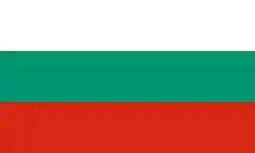 Asenovgrad, Bulgaria
Asenovgrad, Bulgaria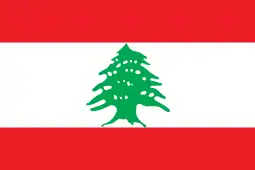 Baalbek, Lebanon
Baalbek, Lebanon Böblingen, Germany
Böblingen, Germany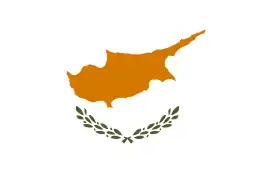 Lefka, Cyprus
Lefka, Cyprus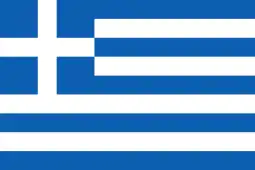 Nea Peramos, Greece
Nea Peramos, Greece Orhei, Moldova
Orhei, Moldova Pergamos, Cyprus
Pergamos, Cyprus Piatra Neamţ, Romania
Piatra Neamţ, Romania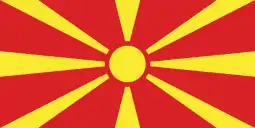 Rosoman, North Macedonia
Rosoman, North Macedonia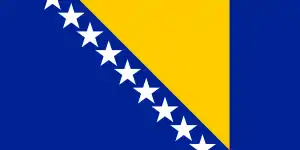 Sanski Most, Bosnia and Herzegovina
Sanski Most, Bosnia and Herzegovina Yehud, Israel
Yehud, Israel
See also
References
- "Area of regions (including lakes), km²". Regional Statistics Database. Turkish Statistical Institute. 2002. Retrieved 2013-03-05.
- "Population of province/district centers and towns/villages by districts - 2012". Address Based Population Registration System (ABPRS) Database. Turkish Statistical Institute. Retrieved 2013-02-27.
- Babaev, Cyril. "Common Anatolian Glossary". tied.verbix.com. Retrieved 2018-03-08.
- Hittite Parku "high" + huma(ti) “base/settlement" and Arguma erha “border" + huma(ti) “base/settlement" Özhan Öztürk. P Pontus: Antik Çağ’dan Günümüze Karadeniz’in Etnik ve Siyasi Tarihi. Genesis Yayınları. Ankara, 2011 pp. 438-39
- "GD8 Bergama - References - Company - LEITNER ropeways". www.leitner-ropeways.com. Archived from the original on 2019-05-02. Retrieved 2016-09-14.
- Managing cyanide: health, safety and risk management practices at Turkey's Ovacik gold–silver mine, Journal of Cleaner Production vol. 14, 8, 2
- "European Court of Human Rights judgment on the Bergama Mine in Turkey" Mines and Communities, published 01-05-2001, access on 31-03-2012
- Coffey, Brendan (2019-09-13). "Fresh Air: Turkish Turbine Blade Factory Invigorates Historic Town". GE Reports. Retrieved 2019-09-28.
- "Kardeş Şehirlerimiz". bergama.bel.tr (in Turkish). Bergama. Retrieved 2020-01-18.
External links
| Wikimedia Commons has media related to Bergama. |
| Wikivoyage has a travel guide for Bergama. |
